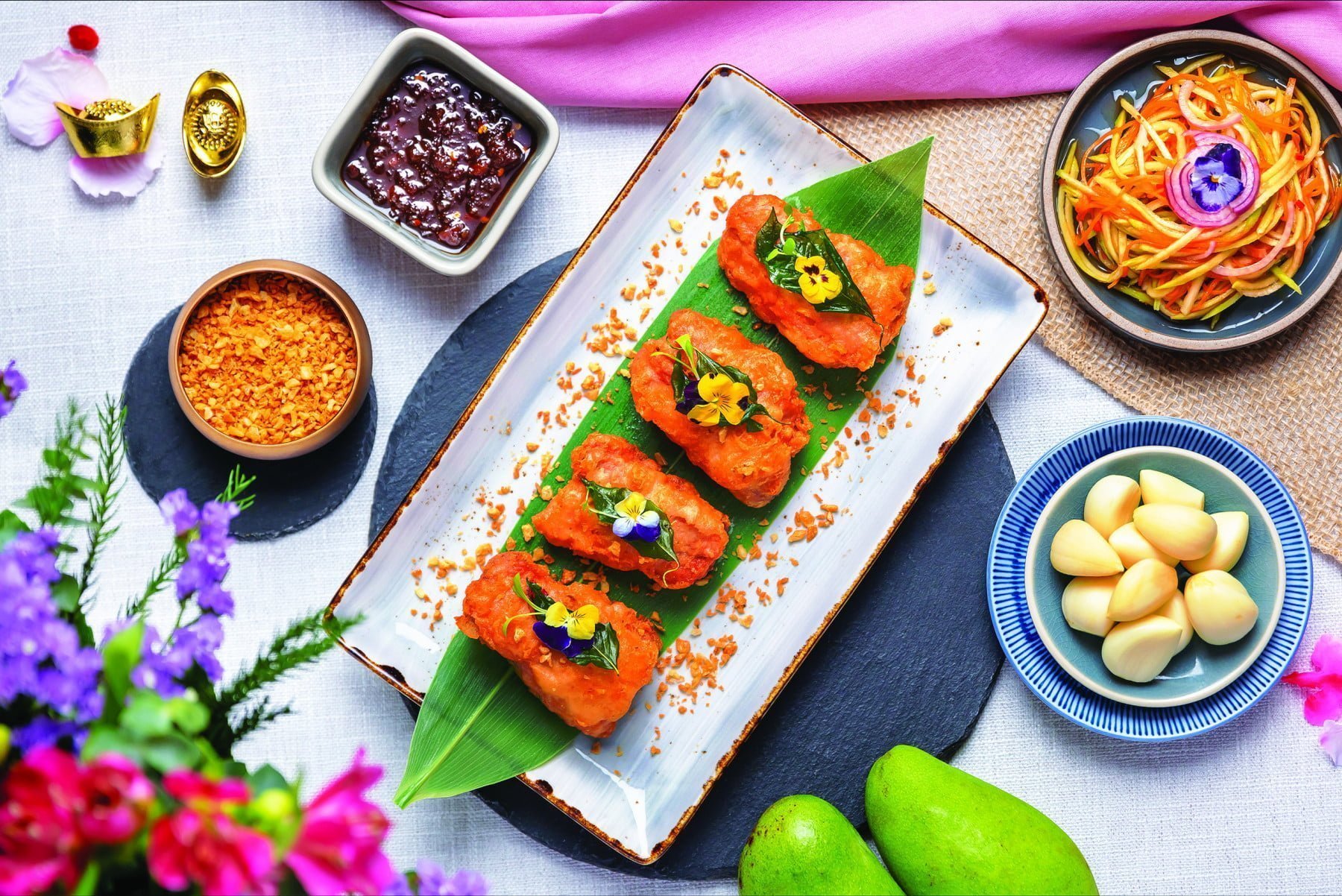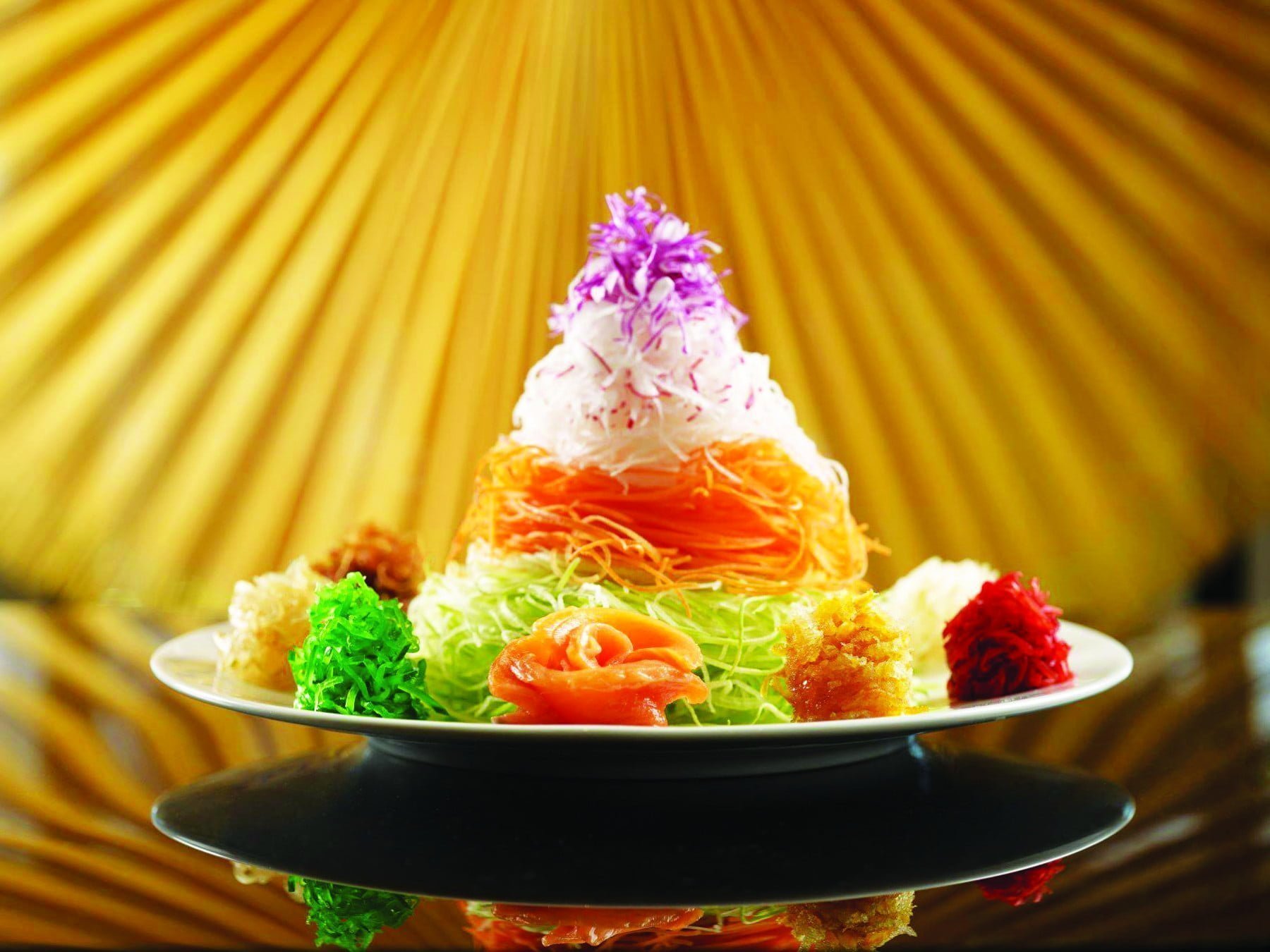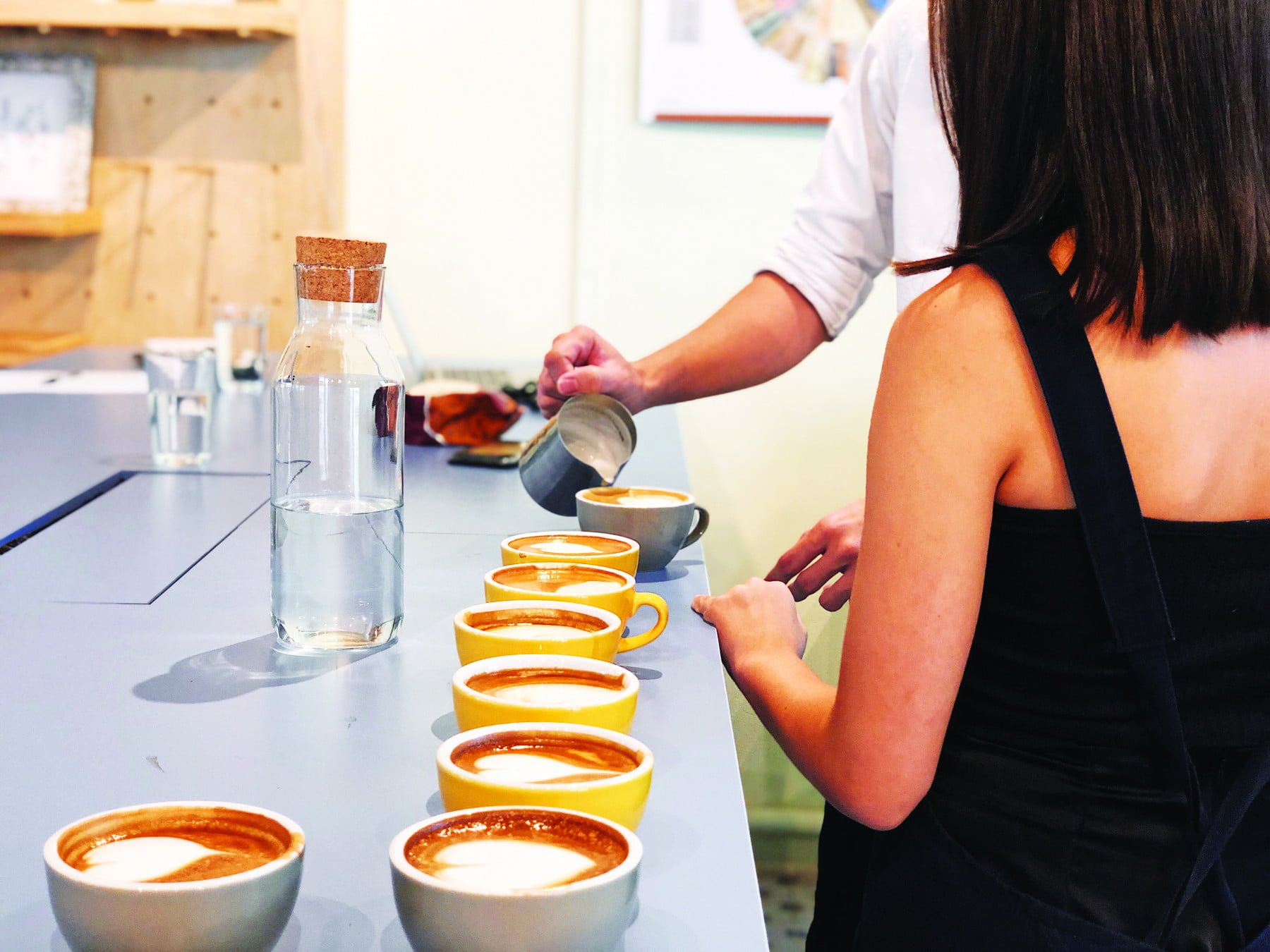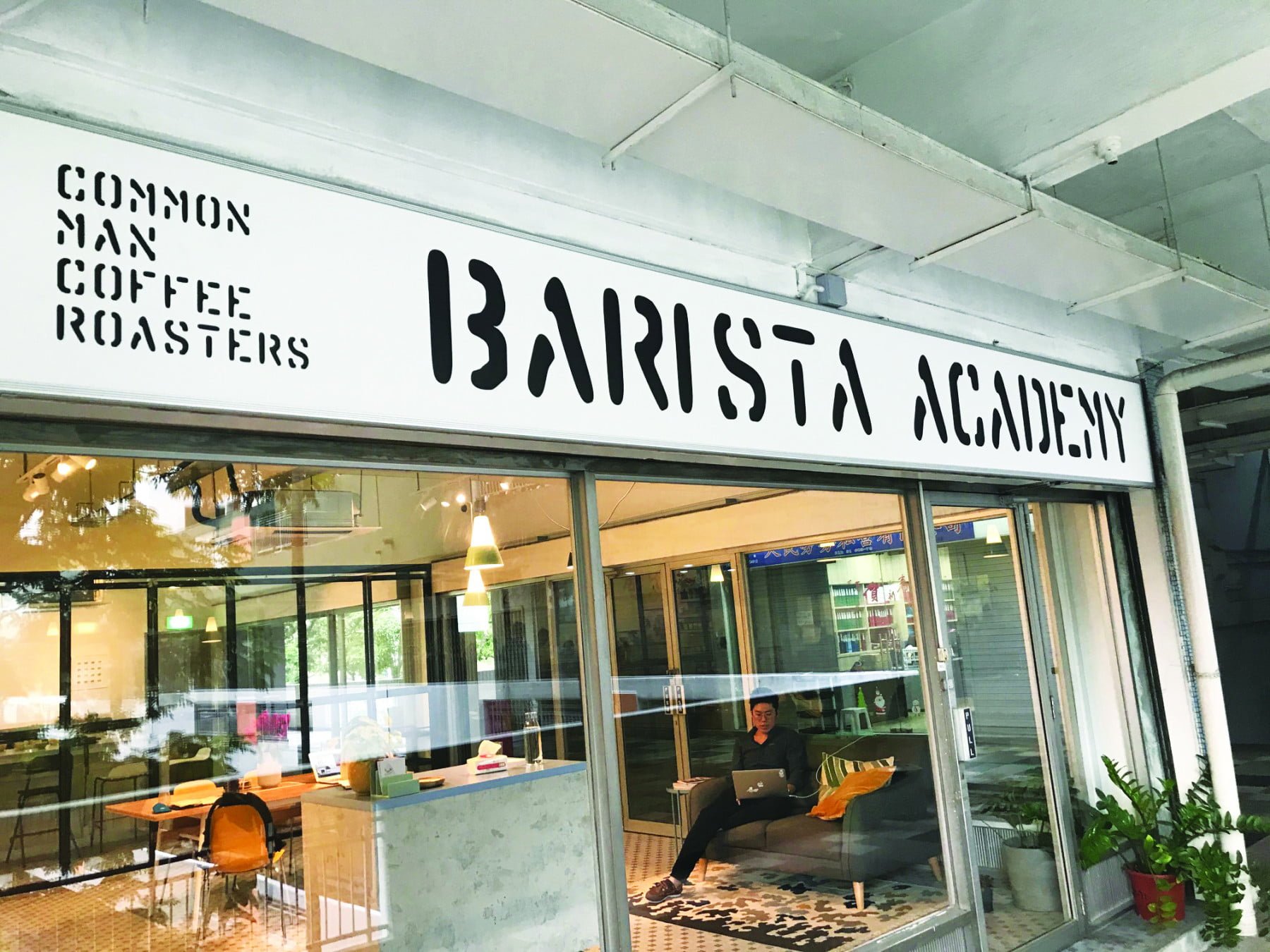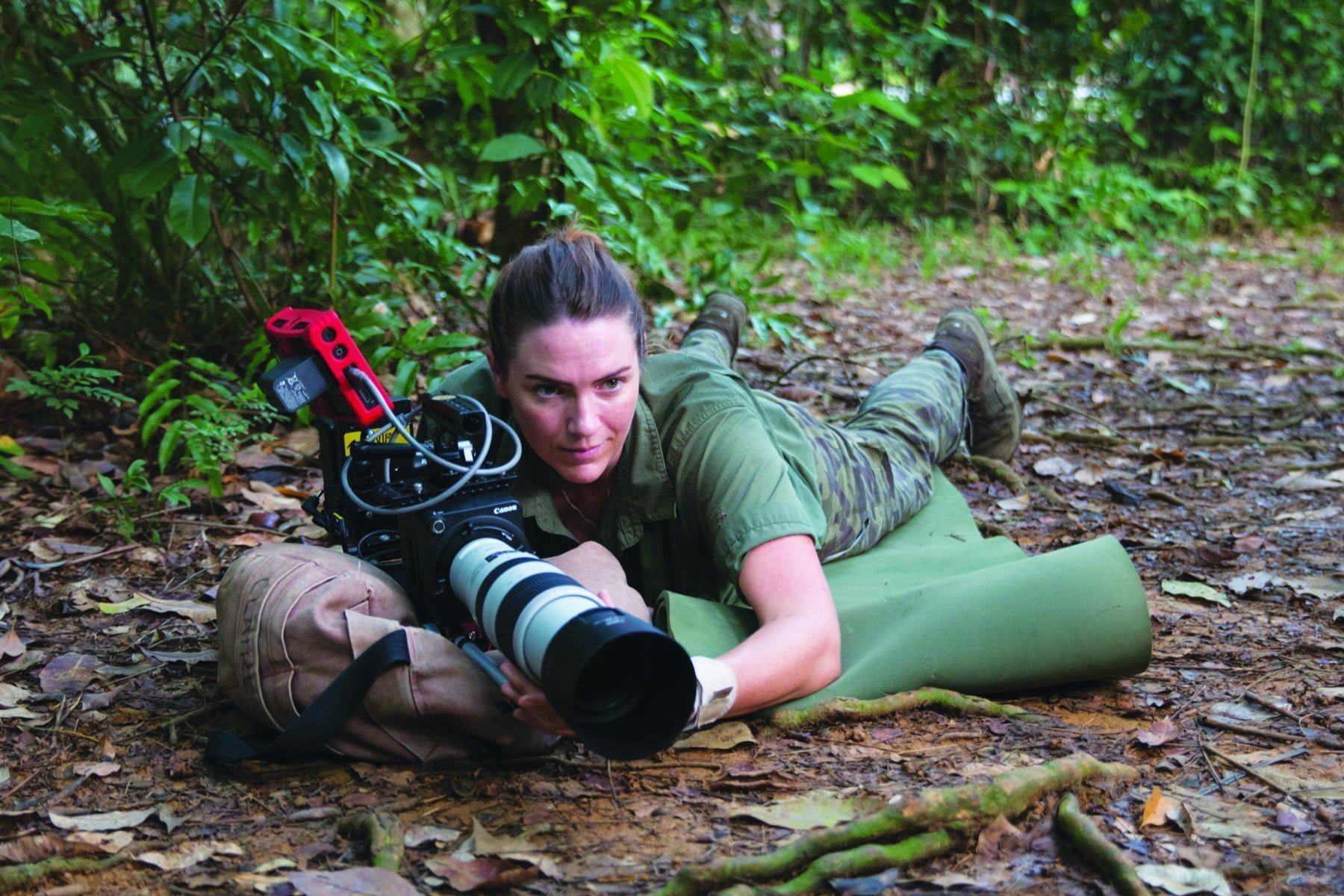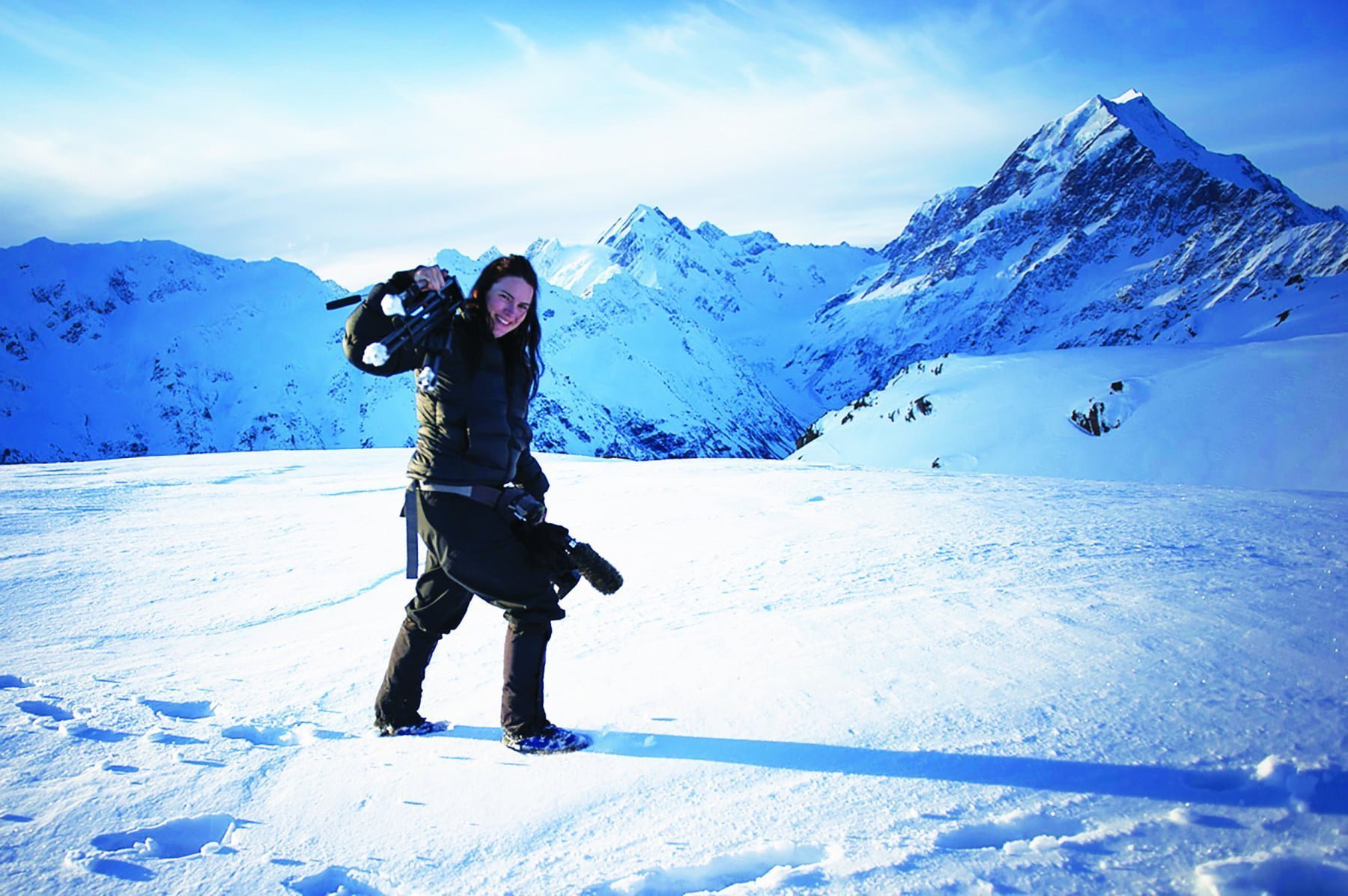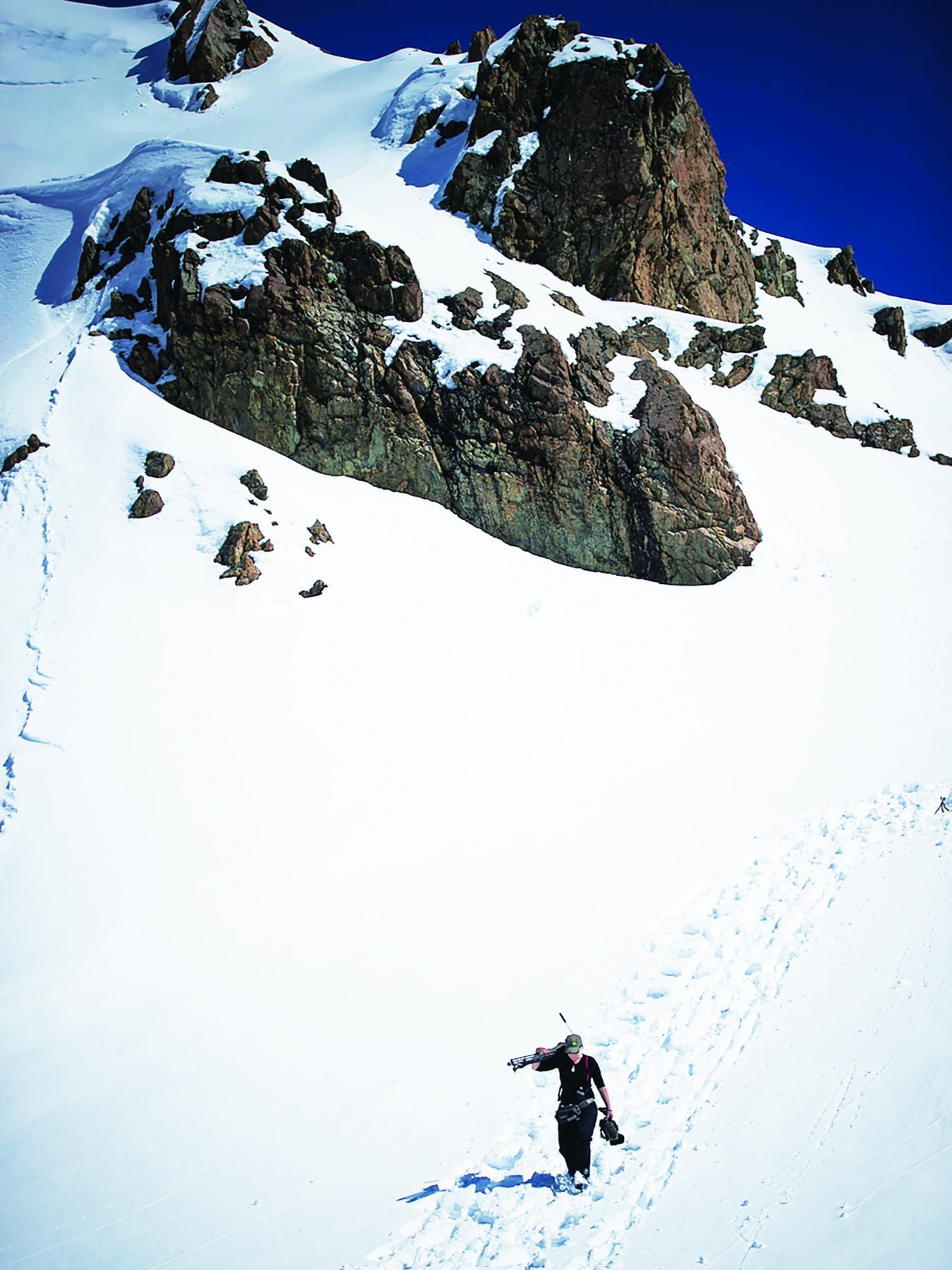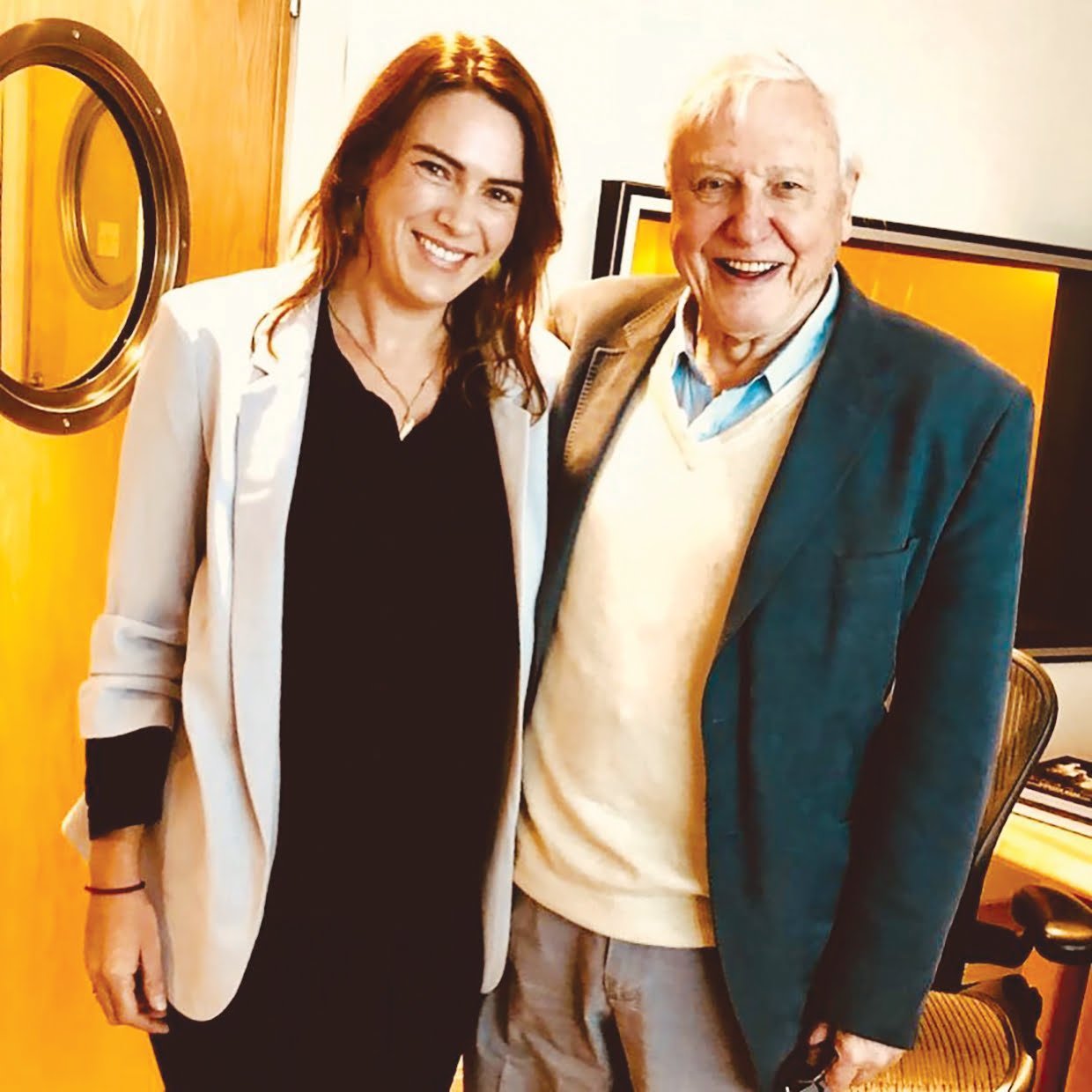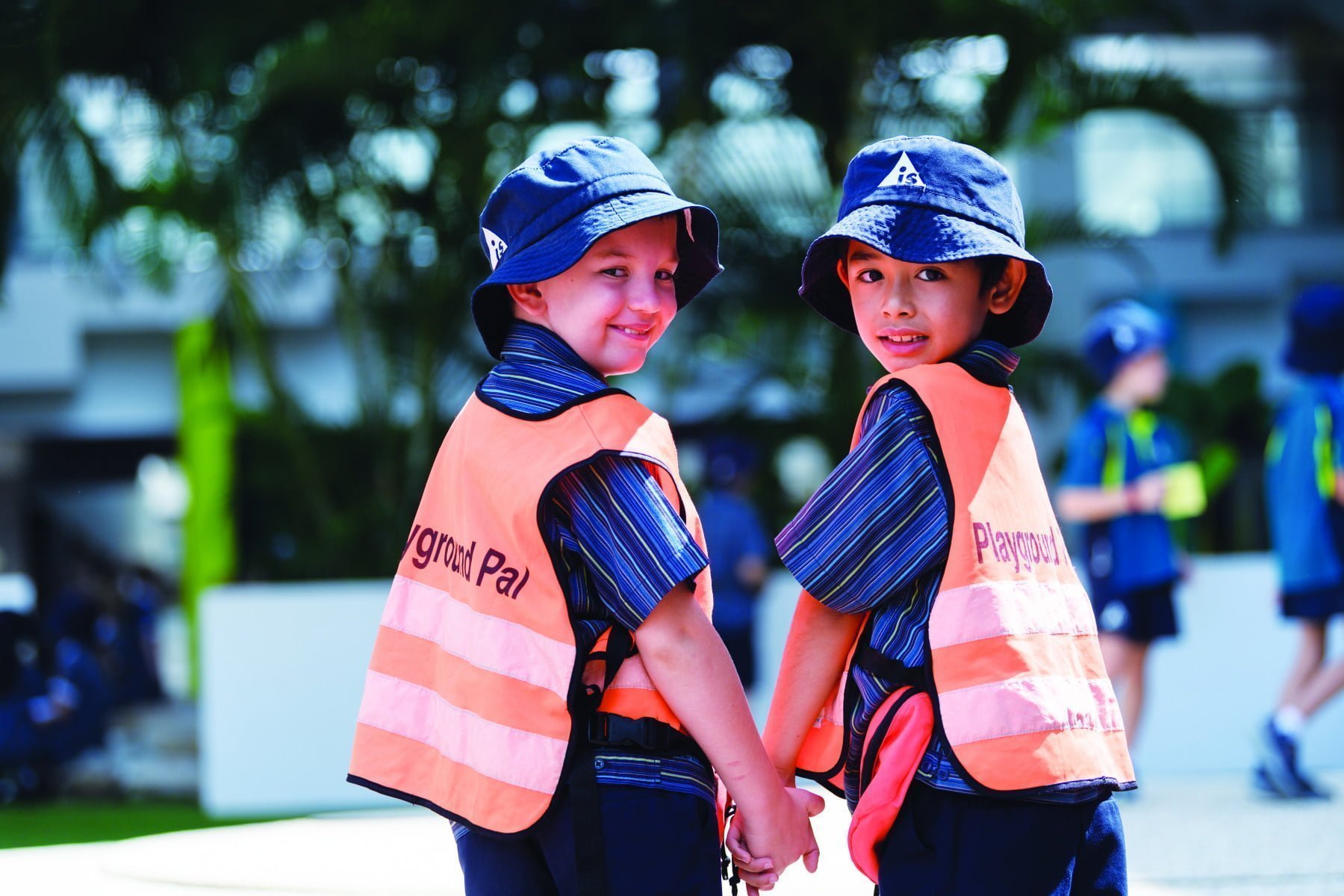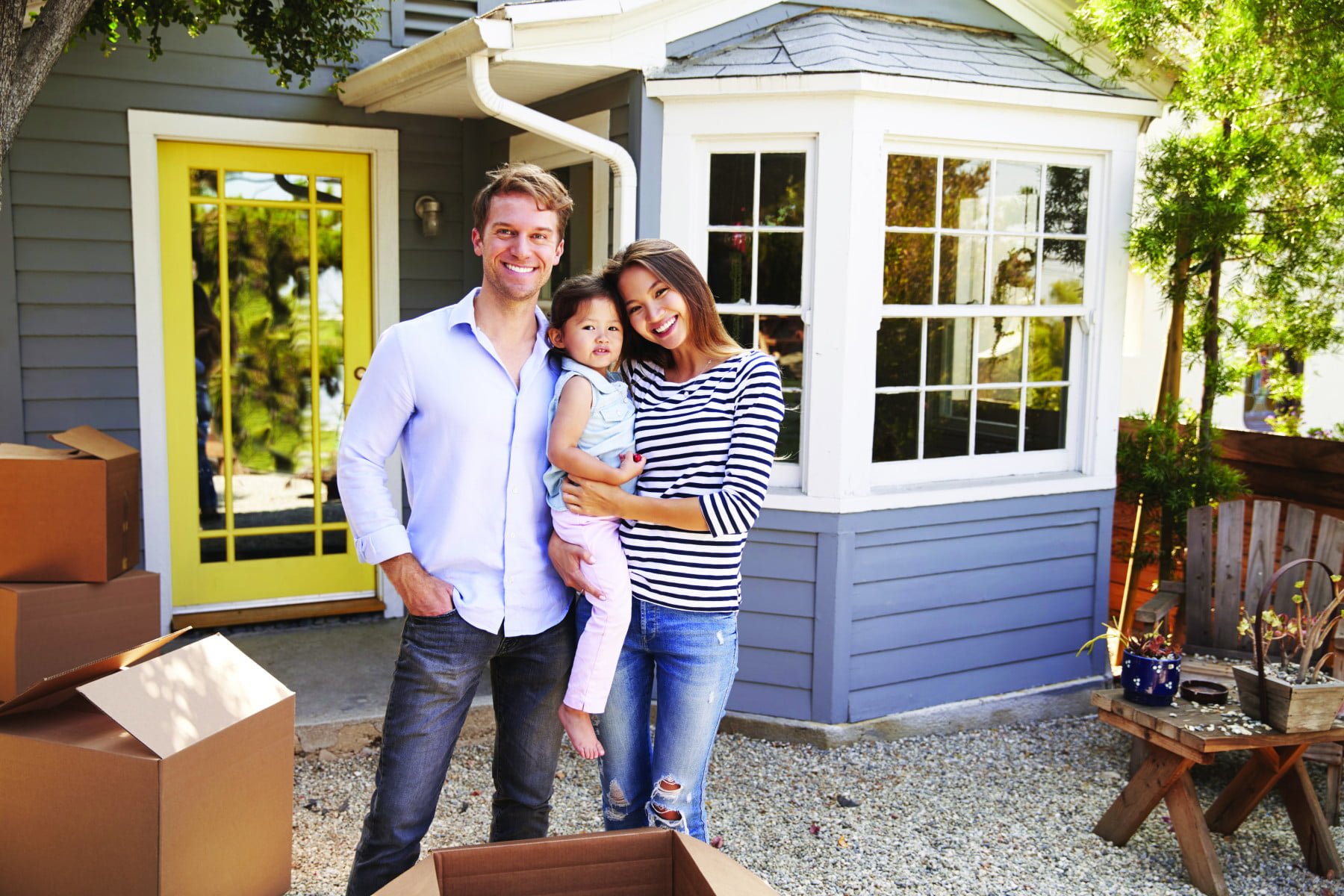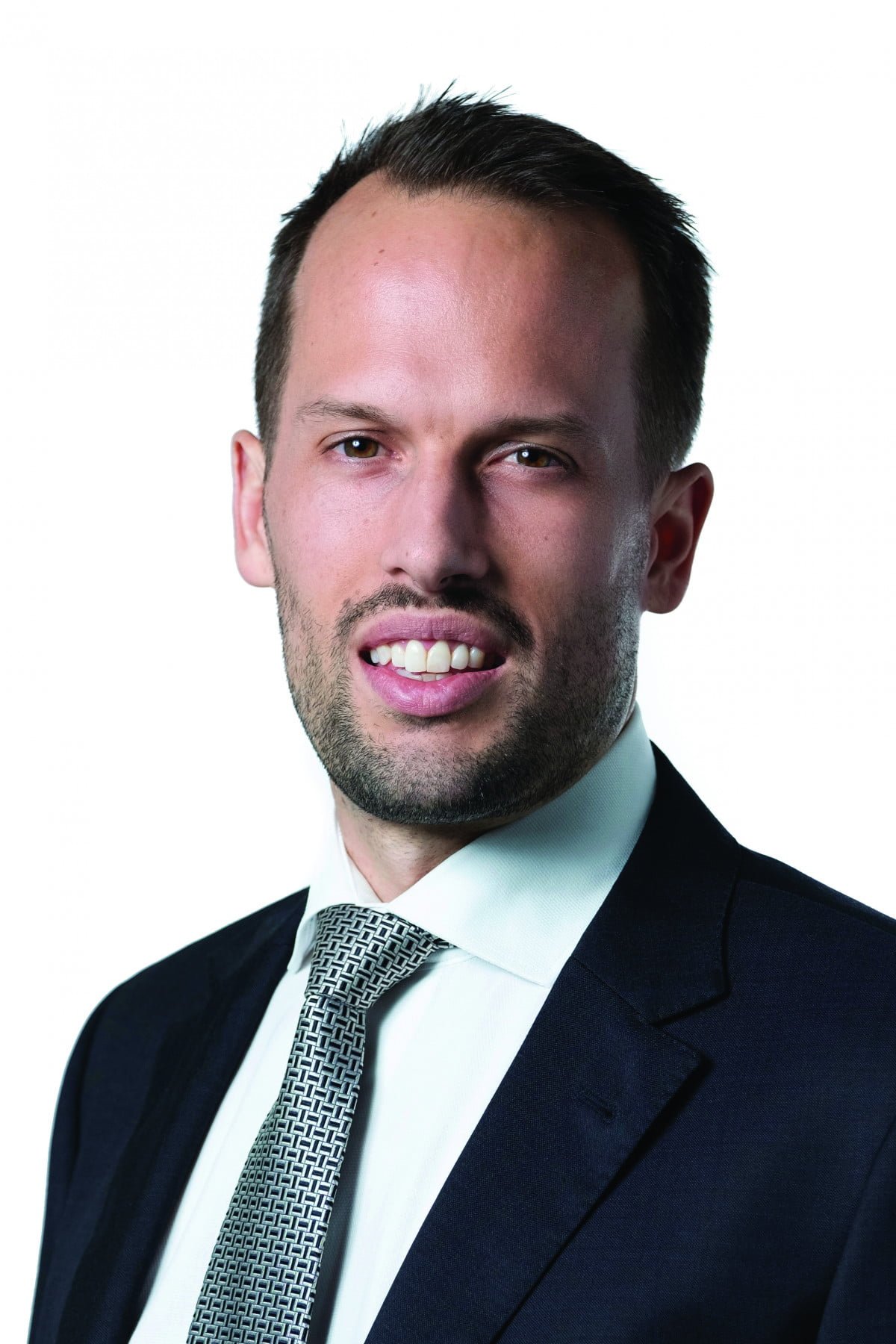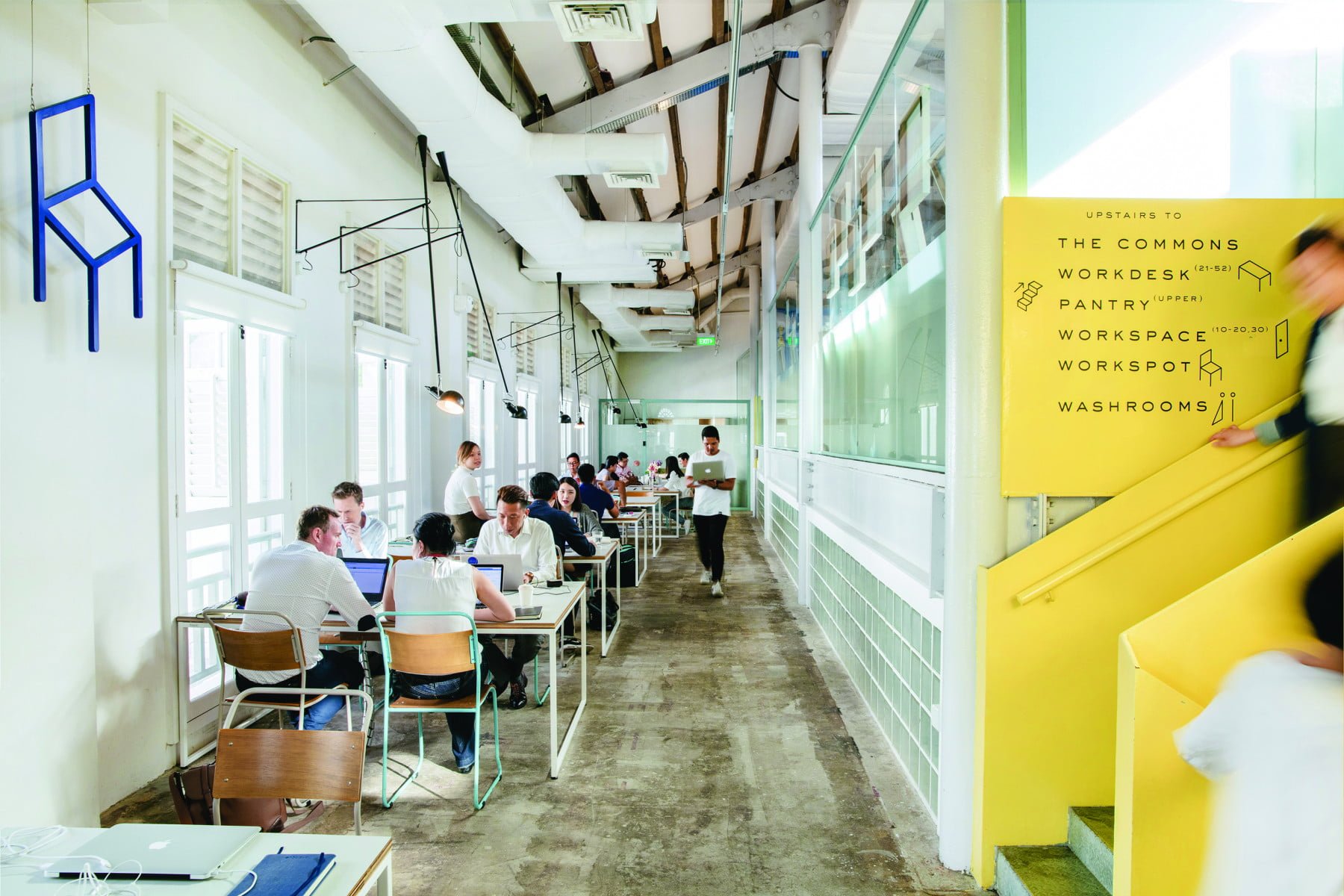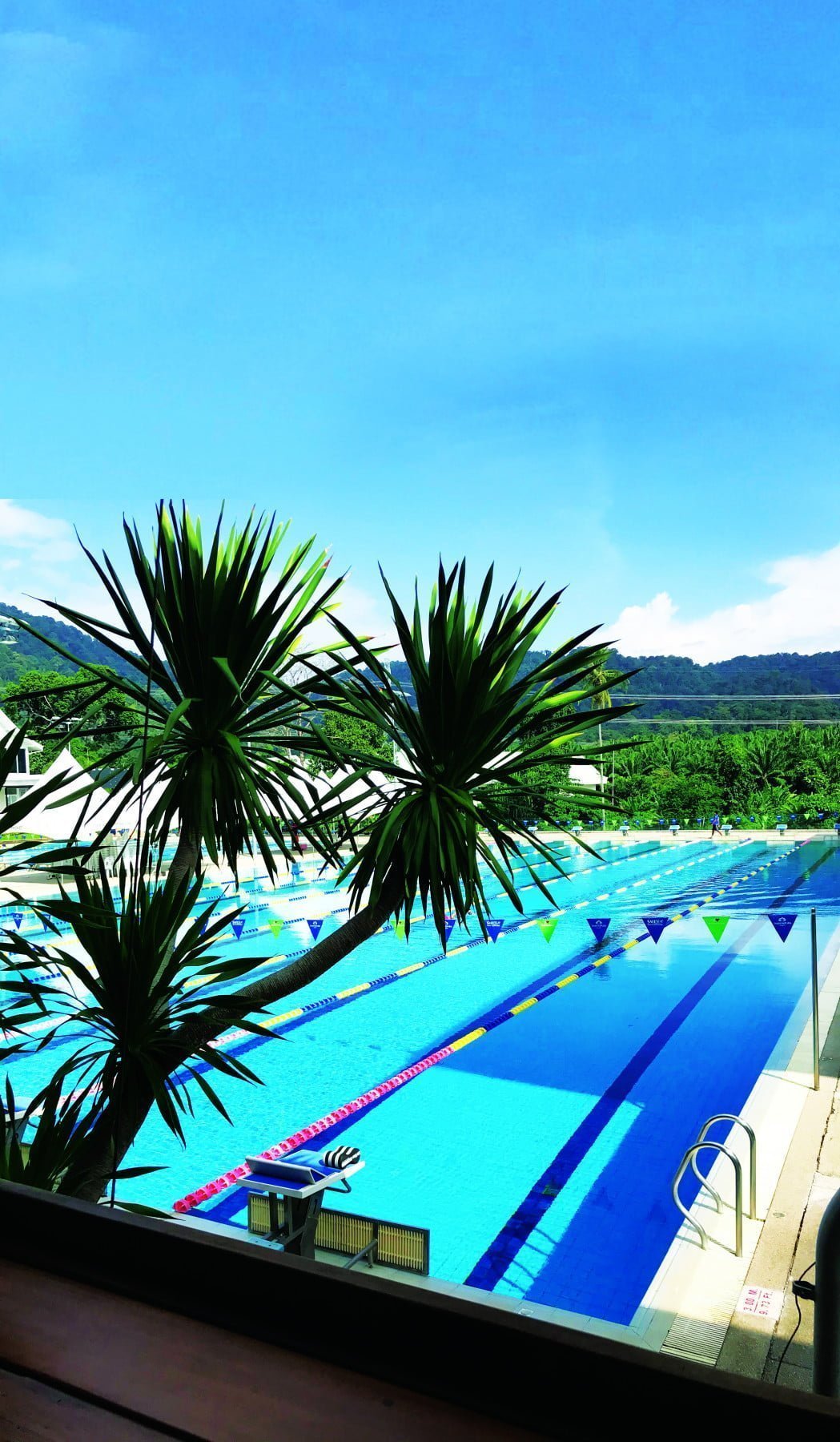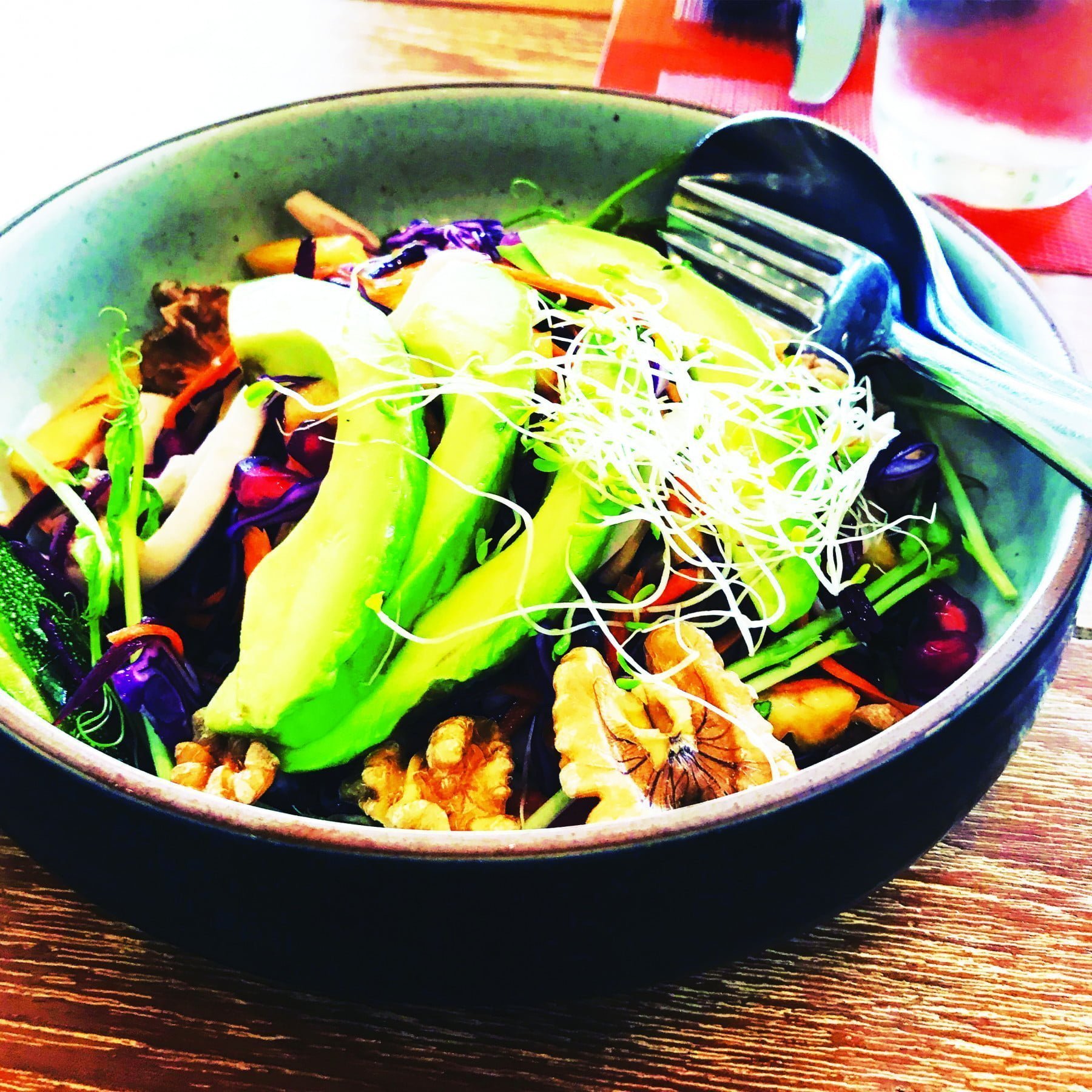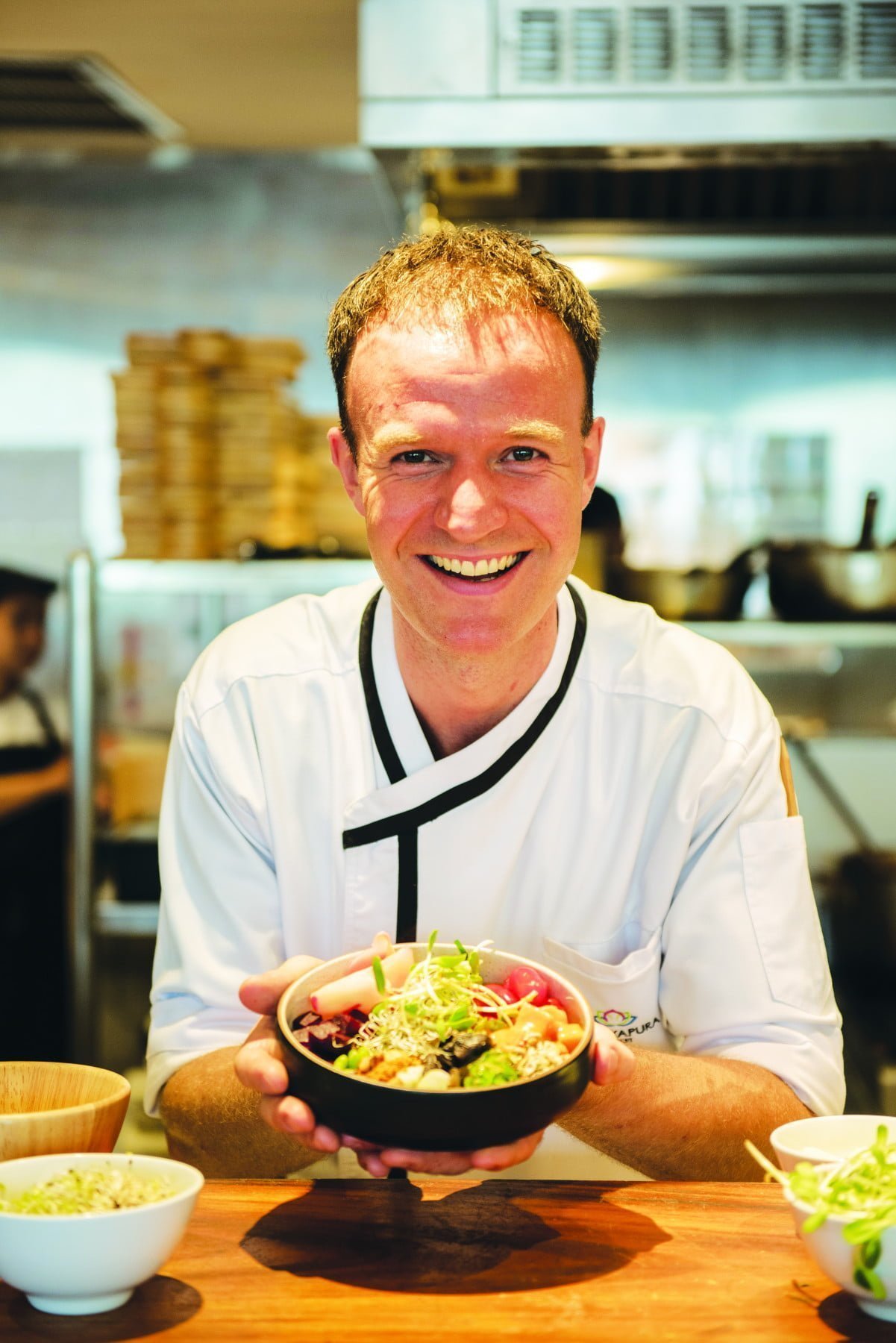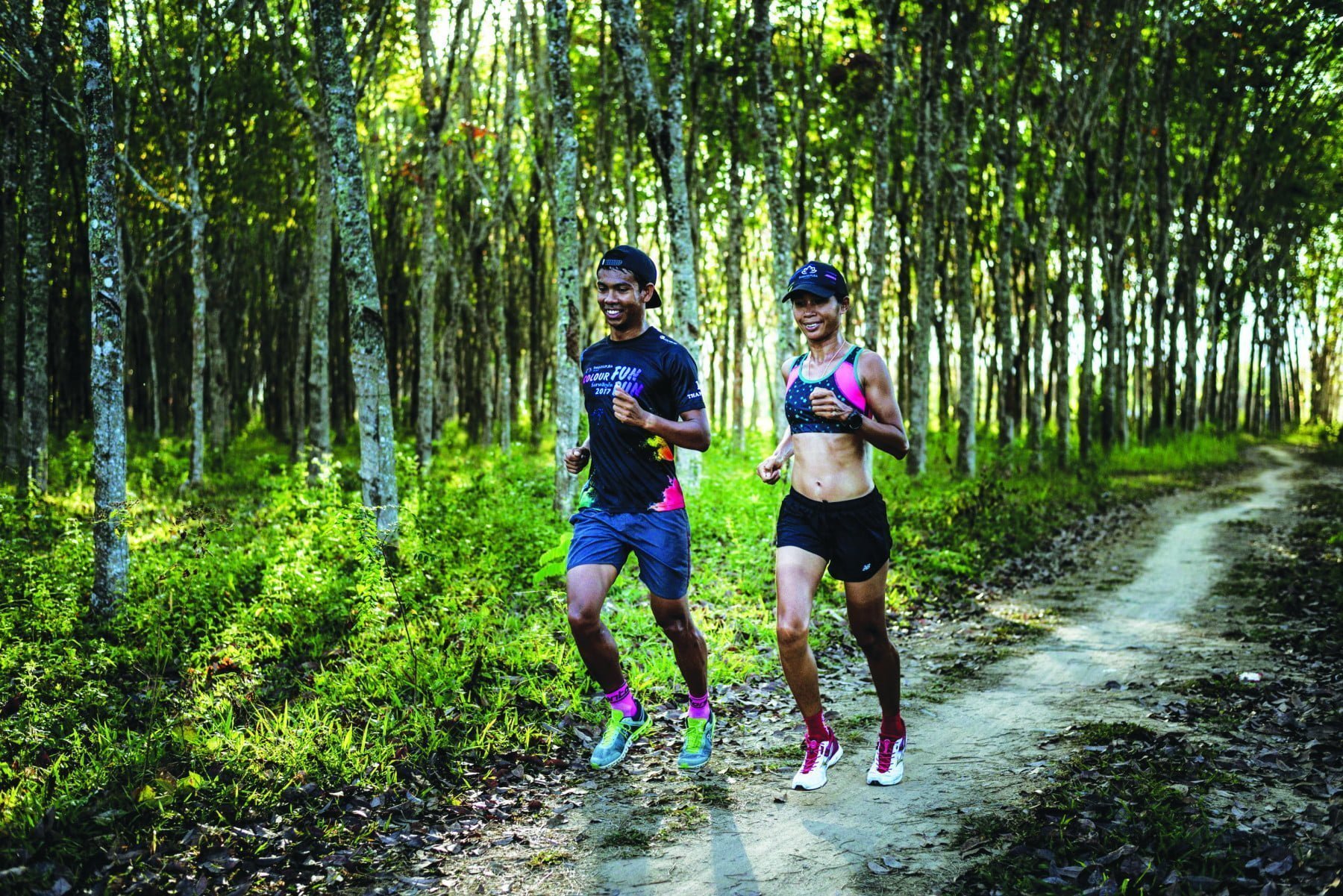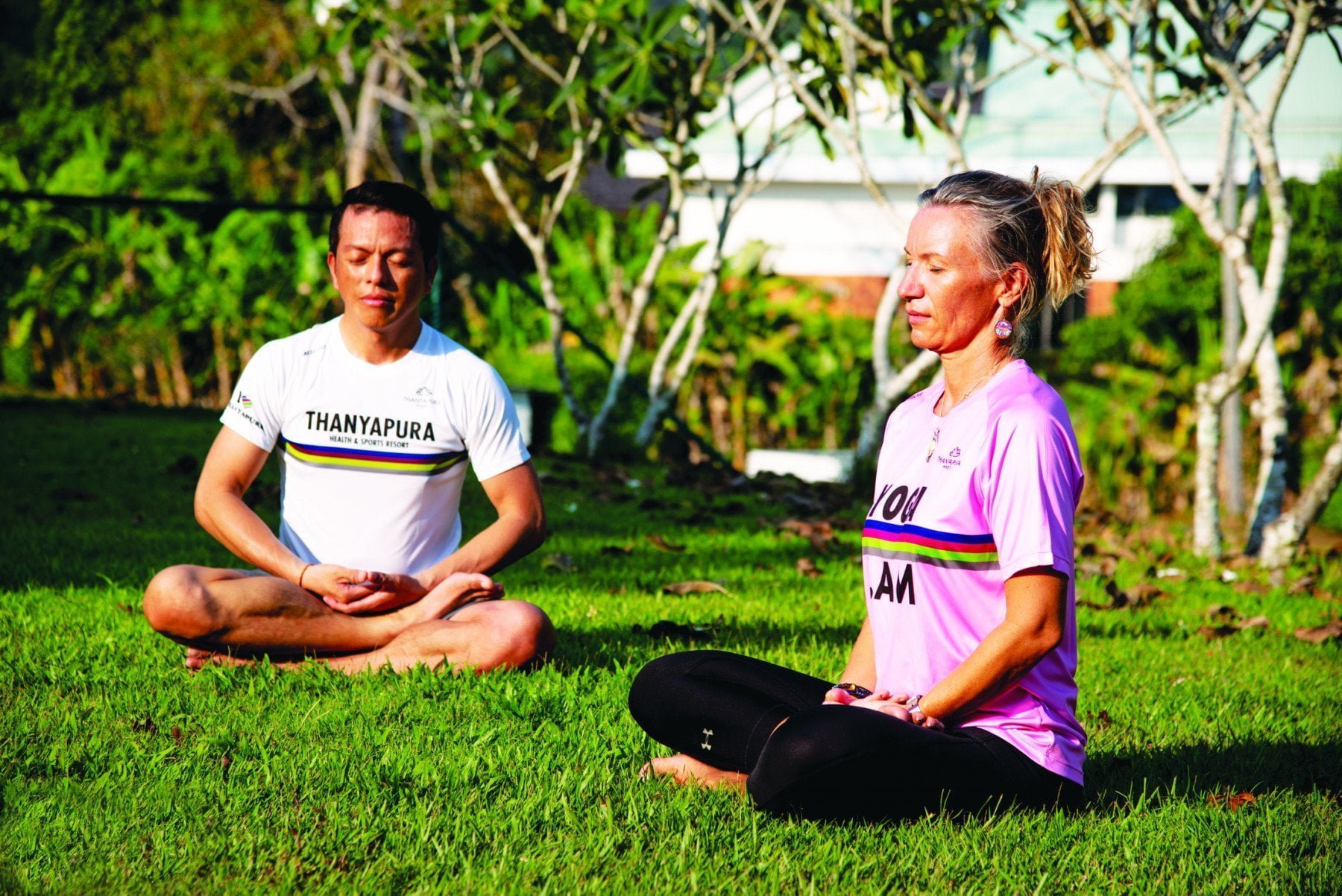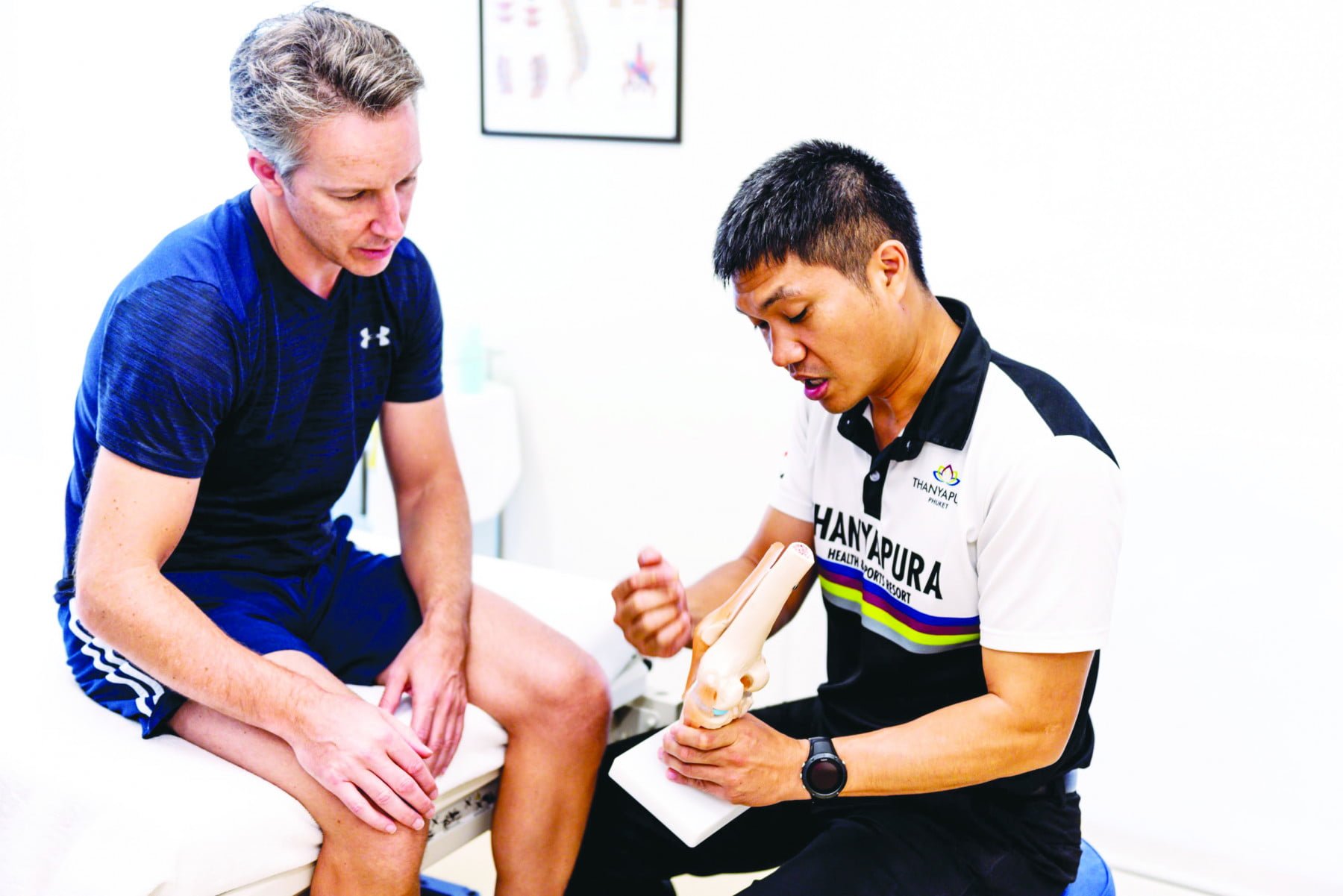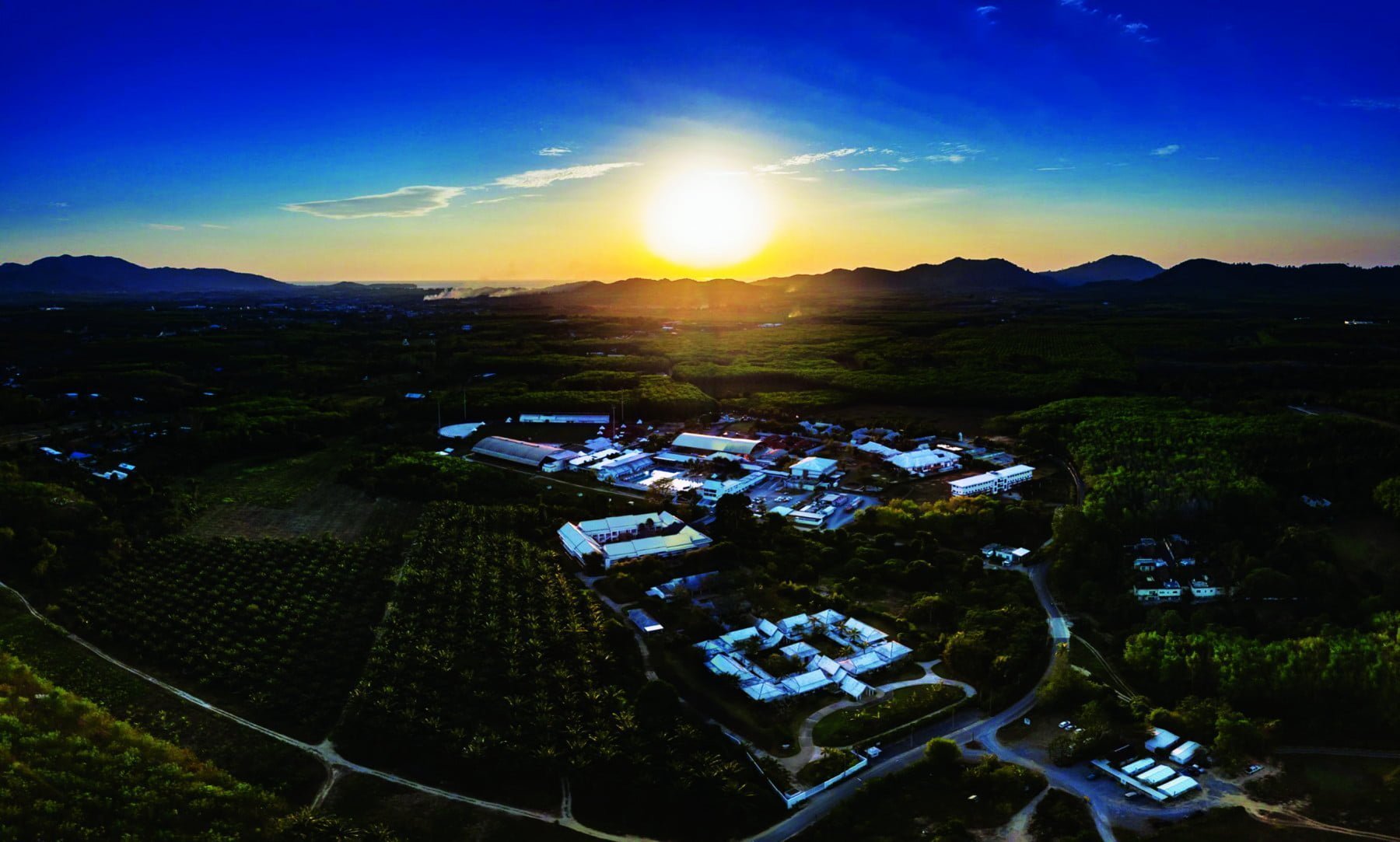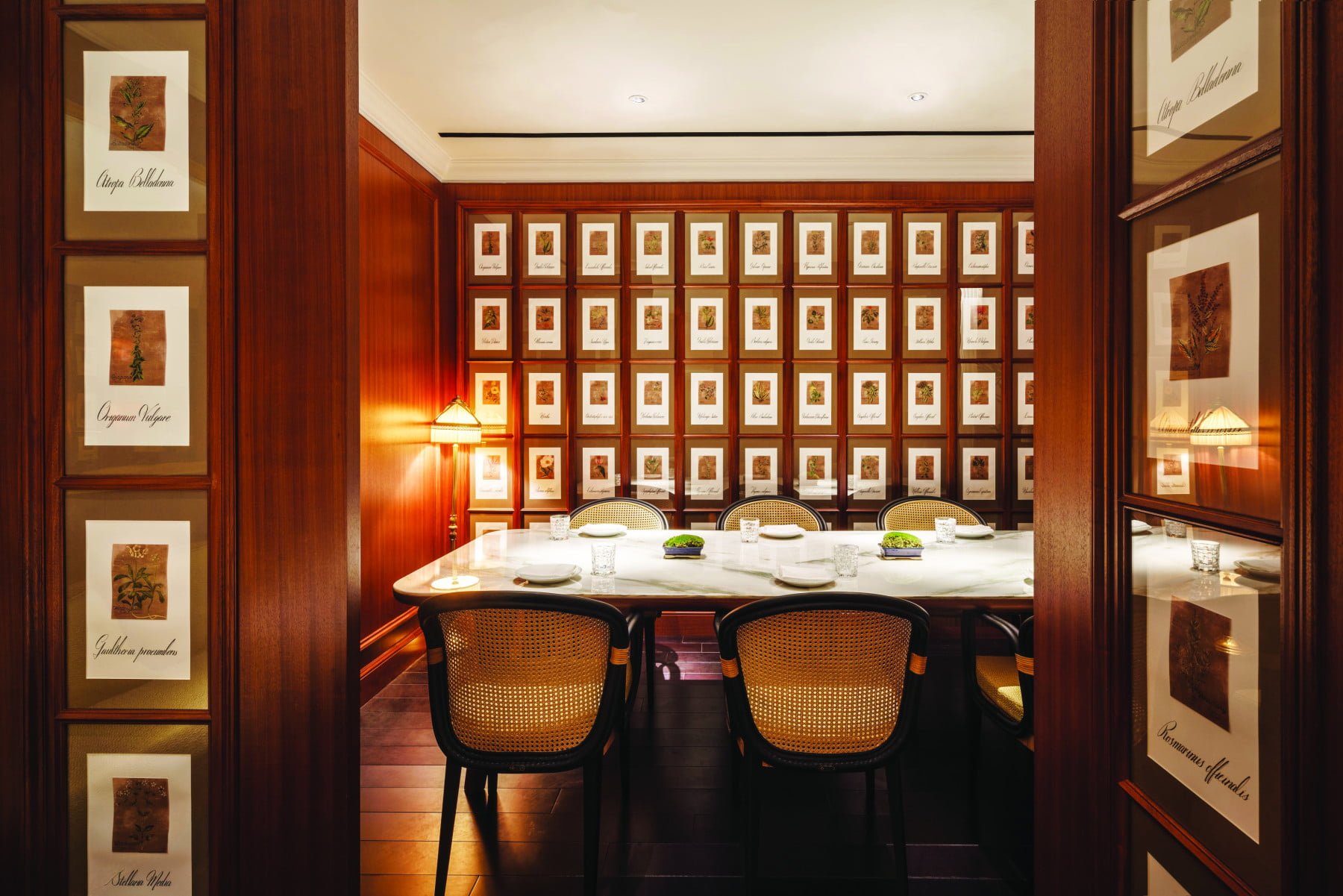
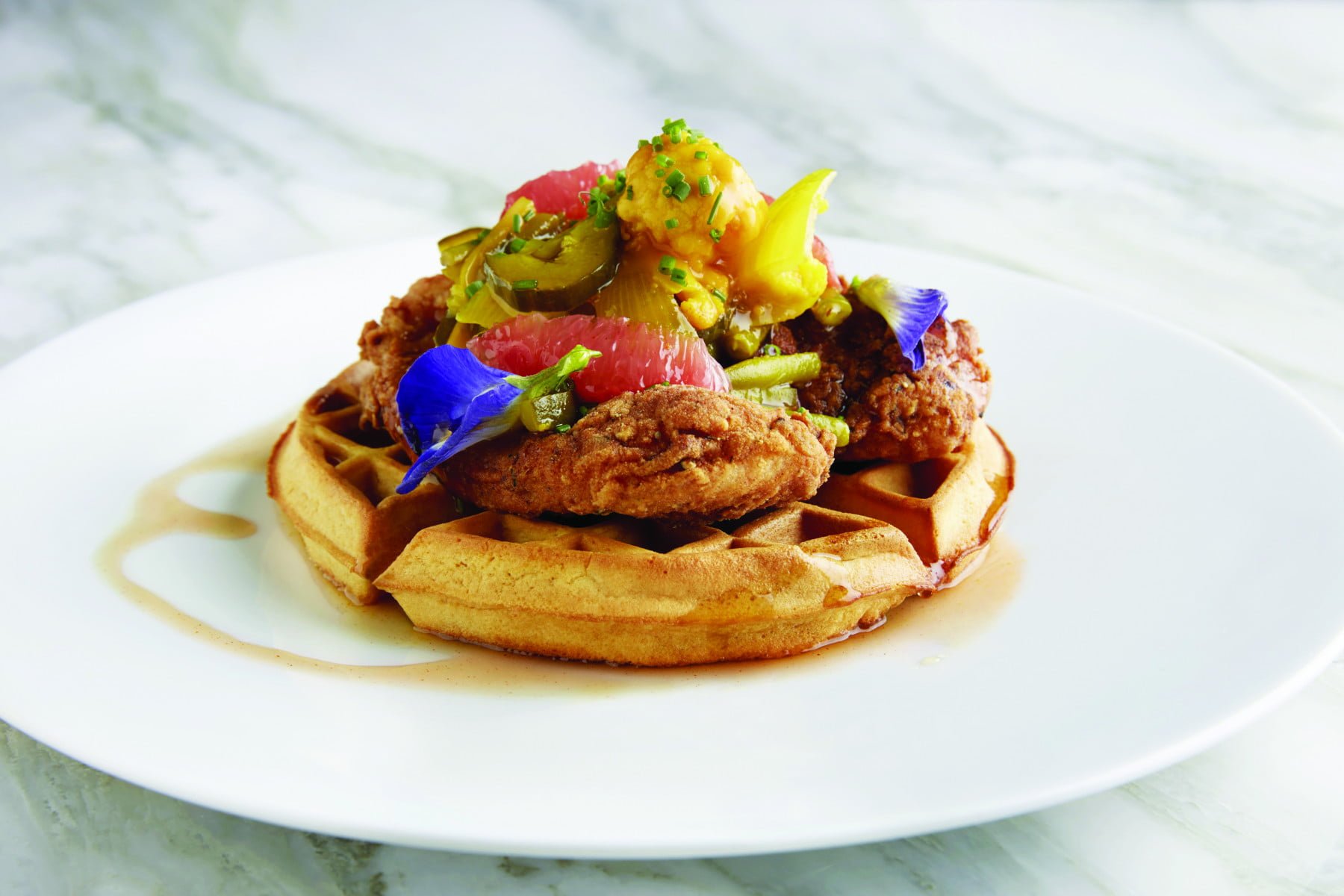
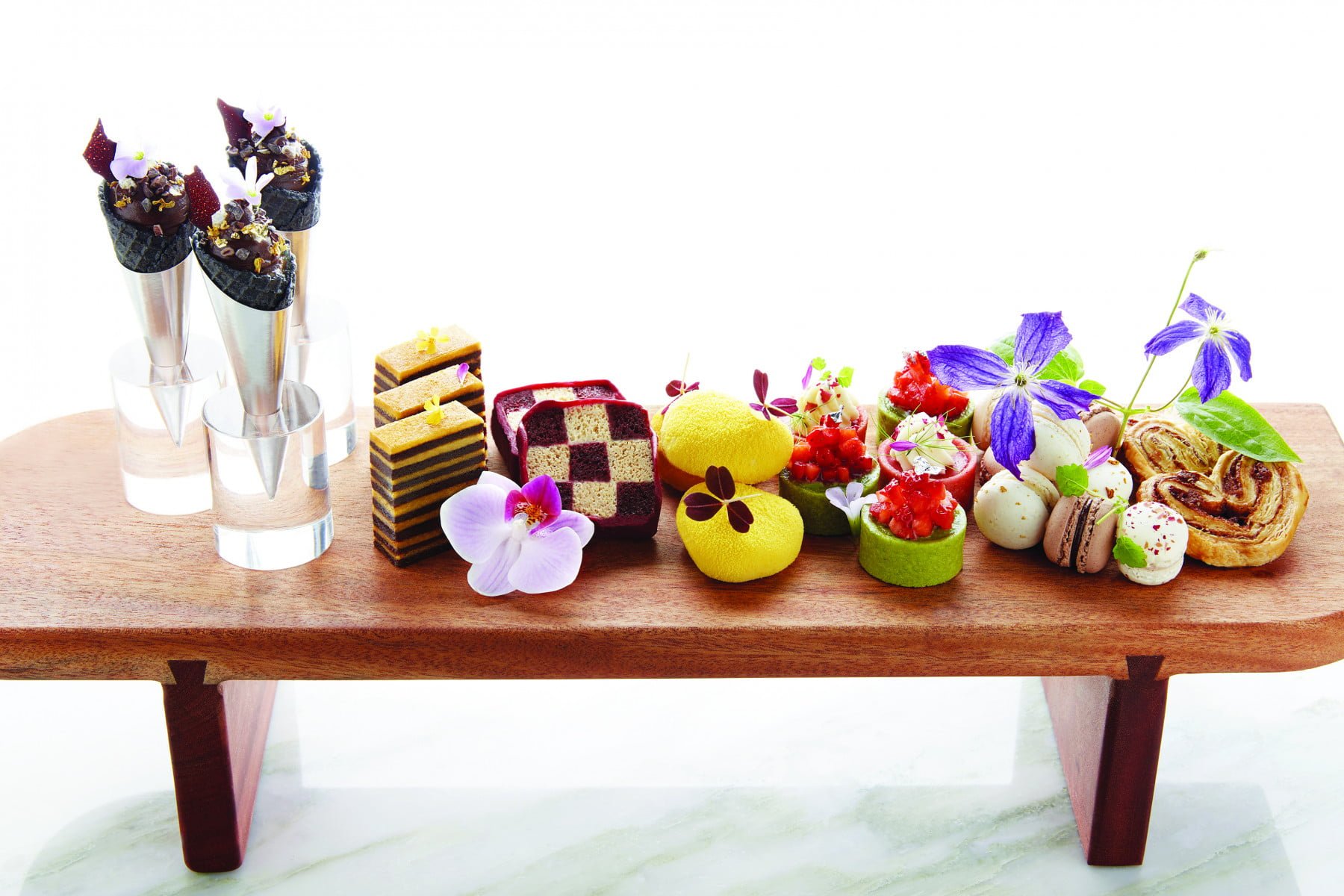
Six Senses Brasserie
Six Senses Maxwell, 2 Cook St, Singapore 078857 sixsenses.com/en/hotels/maxwell/dining/six-senses-brasserie
Forget hectic brunch buffet lines, Six Senses Brasserie offers an elegant, low key and leisurely weekend brunch, where the food comes to you. After a fruity mocktail in the adjacent bar, we head into the refined dining room for The Weekender’s Brasserie Brunch ($68++), which happens every Sat-Sun from 10.30am-3pm.
The first course arrives on a long wooden sharing platter, laden with chicken pate, a bright kale-spinach salad, tangy guacamole, roasted garlic prawns, and excellent New Zealand smoked salmon. We save room for our main course (there are seven to choose from) – I pick the SSB Eggs Benedict with guacamole, spinach and hollandaise on toasted sourdough. My husband can’t go past the American diner classic, Chicken and Waffles; juicy buttermilk fried chicken on a waffle, with piccalilli pickles, ruby grapefruit and semi-spiced maple syrup. We also share the Lobster Mac and Cheese, a rich and creamy dish with generous chunks of lobster meat. It’s hard to stop spooning!
To finish, the impressive “It’s a Piece of Cake” dessert board arrives. We’ve left a little space to try the red velvet cakes, mini tarts, lemon ‘stones’, cinnamon palmier, macarons and a mini cone stand. We linger over coffee and tea, in absolutely no rush to leave the relaxing room!
Verdict: Delicious food, fantastic service and a real sense of theatre – this new brunch is one of the best in town.
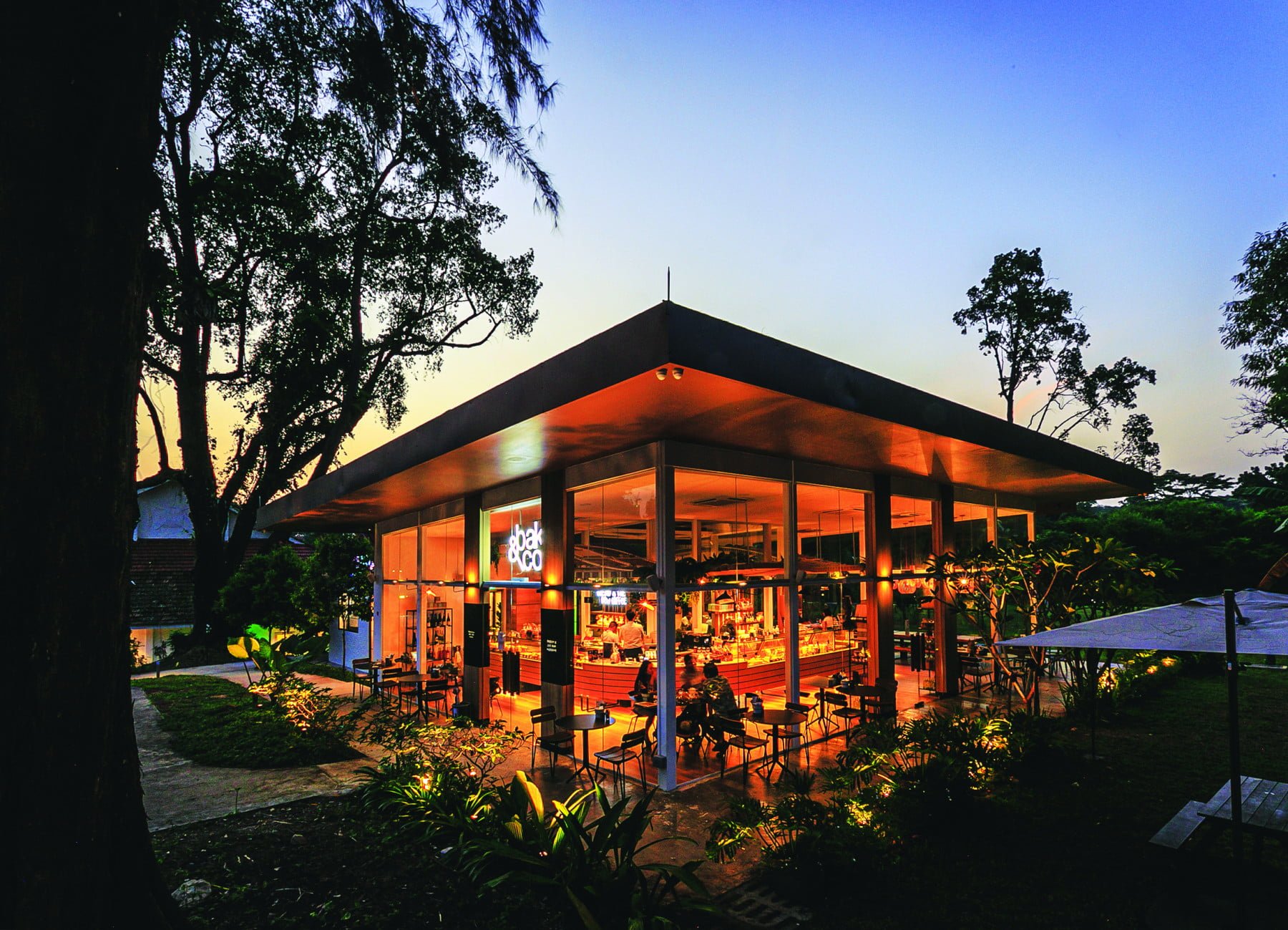
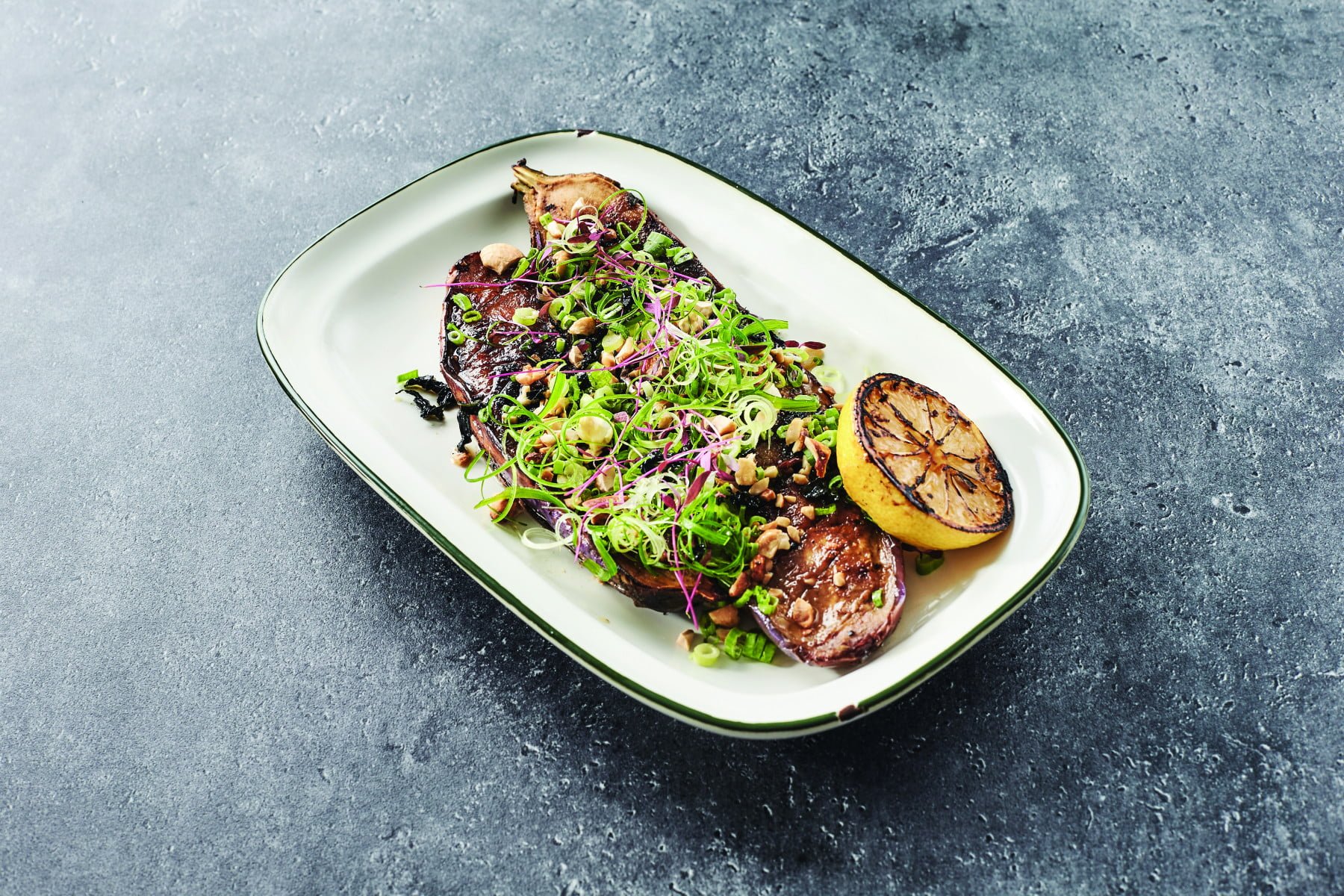
Baker & Cook at Core Collective Dempsey
30C Loewen Rd, Singapore 248839
bakerandcook.biz
Baker & Cook at Core Collective Dempsey is Dean Brettschneider’s newest concept cafe and bakery, set in the green Loewen Cluster. The menu features healthier all-day dining options, with a focus on families – there’s a shaded outdoor playground and on-site parking. Plank Sourdough Pizza shares the space and diners can order from their menu as well.
In addition to the usual Baker & Cook offerings of New Zealand All Press coffee, artisan pastries, breads, pies, salads and sandwiches, there are some fantastic brunch and larger plate options here.
We tried a series of delicious dishes, including Turkish eggs with whipped yogurt, Aleppo chilli butter and toasted sprouted wheat sourdough ($20), Dutch Baby Pancake with earl grey poached pear, berries, maple yogurt and lemon curd ($22) and Chorizo Hash – spiced crushed potatoes, chorizo, fried egg, rocket, with siracha oil ($20)
The standout dish for me was the Kuhlbarra Barramundi En Papillote with prawns, shimeiji mushrooms, hot and sour broth, and peanut crumble ($28) A delicious locally farmed fish simmered in a Thai style broth, with notes of lemongrass, ginger, garlic, fish sauce and lime. The sourdough bread was ideal for mopping up the leftovers!
Verdict: Another great neighbourhood café, pop in for a bite – the kids can run around freely outside, and pets are also welcome.




